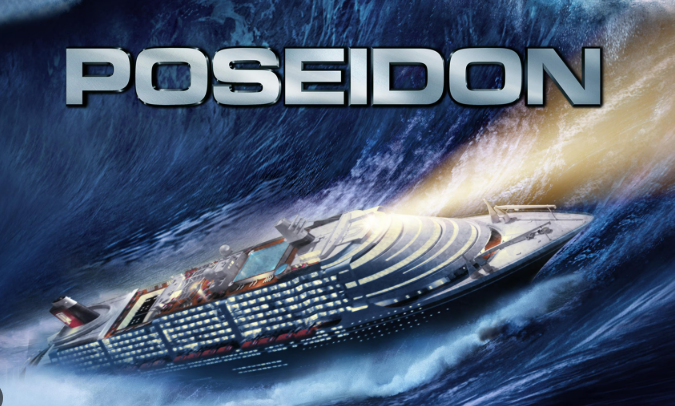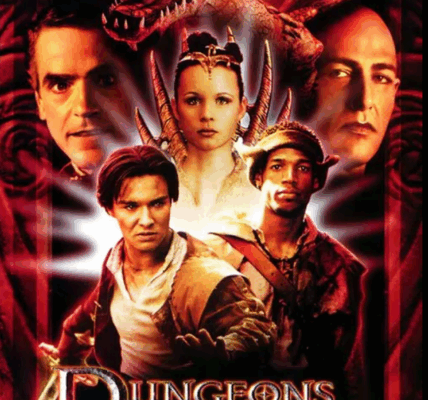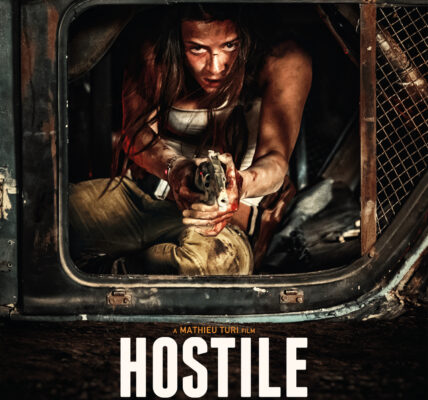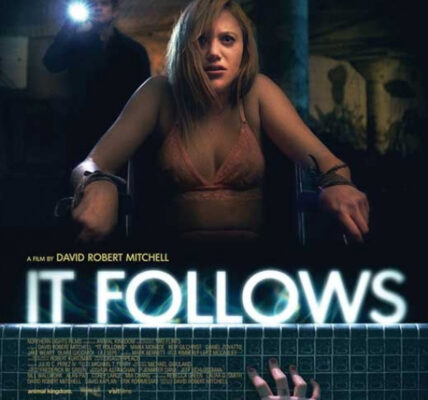1. Plot Summary
On New Year’s Eve, the luxury cruise liner Poseidon sails through the North Atlantic, full of passengers celebrating. Suddenly, a massive rogue wave strikes the ship, capsizing it and turning it upside down.
Amid the chaos and rising waters, a small group of survivors—among them Dylan Johns (Josh Lucas), Robert Ramsey (Kurt Russell), Jennifer Ramsey (Emmy Rossum), Maggie James (Jacinda Barrett), and others—band together. Dylan, skeptical of staying put and waiting for rescue, chooses to lead them through the inverted wreckage in a desperate push for safety. They must navigate through flooding corridors, collapsing metal, air pockets, flames, and shifting debris, all while the ship’s infrastructure breaks down.
The survivors face moral and physical dilemmas, small acts of heroism and sacrifice, and the sheer cruelty of their predicament. Their goal is to reach the surface and escape the doomed vessel.
2. Notable Elements
What Stands Out
- Opening capsizing sequence: The moment the wave hits and the ship flips is visually dramatic and intense, setting the tone for the disaster.
- Upside-down survival: The film draws interest by placing survivors in a world where “up is down”: corridors, ceilings, and floors are inverted. Navigating that environment gives familiar disaster tropes a new twist.
- Effects & visuals: Many reviews praise the special effects and set design, especially in the early flooding and destruction scenes.
- Grouping of characters with diverse motives: The cast features people with different backgrounds—parents, stowaways, gamblers—leading to conflict, cooperation, and tension among the survivors.
- Tension over waiting vs acting: A key dramatic tension is whether survivors should stay put (as the captain suggests) or try to find their own escape route. Dylan’s decision to push ahead is central to the plot.
Weaknesses / What Didn’t Always Work
- Thin character development: Many characters are sketched more for function (to die, to save, to provide tension) than full arcs. Some reviews call them “cardboard.”
- Emphasis on spectacle over story: Critics argue the film leans heavily on visuals and set pieces, sometimes at the expense of narrative depth or plausibility.
- Pacing issues / predictability: After the initial shock, some segments can feel repetitive or formulaic—characters exploring corridors, fighting rising water, hazards emerging.
- CGI / effects inconsistency: In some safer or distant shots, effects or environments look less convincing, which can undercut immersion.
- Unbalanced tone: The film sometimes shifts quickly between tense survival drama and moments of melodrama, which may feel jarring.
3. Themes and Messages
- Human resilience and cooperation: Even in disaster, people must collaborate, make sacrifices, and push beyond individual limits to survive.
- Choice vs fate: The survivors’ decisions—stay and wait, or act now—highlight the tension between trusting in rescue and taking risky initiative.
- Mortality exposed: The film forces characters (and audience) to confront fragility, sudden loss, and how quickly life can change.
- Sacrifice & courage: Some characters willingly put themselves in danger for others; these choices mark the emotional core in a disaster narrative.
Though not a holiday or sentimental film, its focus on survival, selflessness, and facing crisis can resonate with stories of perseverance, human connection, and hope in darkness—ideas often celebrated in seasonal reflections.
4. Personal Impressions
What I liked:
- The movie is often gripping when it leans into tension: the flooding, explosions, claustrophobic corridors—all generate real anxiety.
- The visual of an inverted shipscape makes for memorable set pieces and gives a fresh “disaster movie” twist.
- The cast is solid—though limited by the material, actors like Josh Lucas bring a driving energy.
- The decision to not linger overly long on setup helps; the disaster happens early, dragging the audience immediately into the threat.
What I felt less effective:
- I wanted more time to connect emotionally with the characters; in some cases I wasn’t deeply invested in who survived or died.
- The midsection sometimes slows, repeating themes and obstacles without raising stakes further.
- Certain plot conveniences—escaping through sudden passages, doors opening just in time—felt forced.
- The CGI inconsistencies occasionally jerk me out of the experience when the visual effects don’t fully match up.
5. Audience Recommendations
You’ll especially enjoy Poseidon (2006) if you:
- Love disaster films, especially ones with large-scale catastrophe, trapped settings, and survival tension.
- Don’t mind some narrative simplicity in exchange for strong spectacle.
- Appreciate visual and technical ambition: big effects, set design, and action sequences.
- Want something thrilling, suspenseful, and emotionally raw rather than a slow drama.
You might be less pleased if you:
- Prefer character dramas where every personality is deeply explored.
- Dislike films that prioritize action over logic.
- Are sensitive to weak CGI or moments of implausibility.
6. Conclusion & Rating
Poseidon is not a perfect remake, but it’s a solid entry in the disaster genre. Its strong visuals, tense moments, and inverted ship premise give it a distinctive edge. While narrative depth and character richness are somewhat sacrificed, for many audiences, the thrills and spectacle will suffice.
Final Recommendation: Watch it for the ride—if you enjoy disaster spectacles and don’t demand perfection of plot, this film delivers enough excitement to be worthwhile.
⭐ Rating: 3.5 / 5
Watch more:




